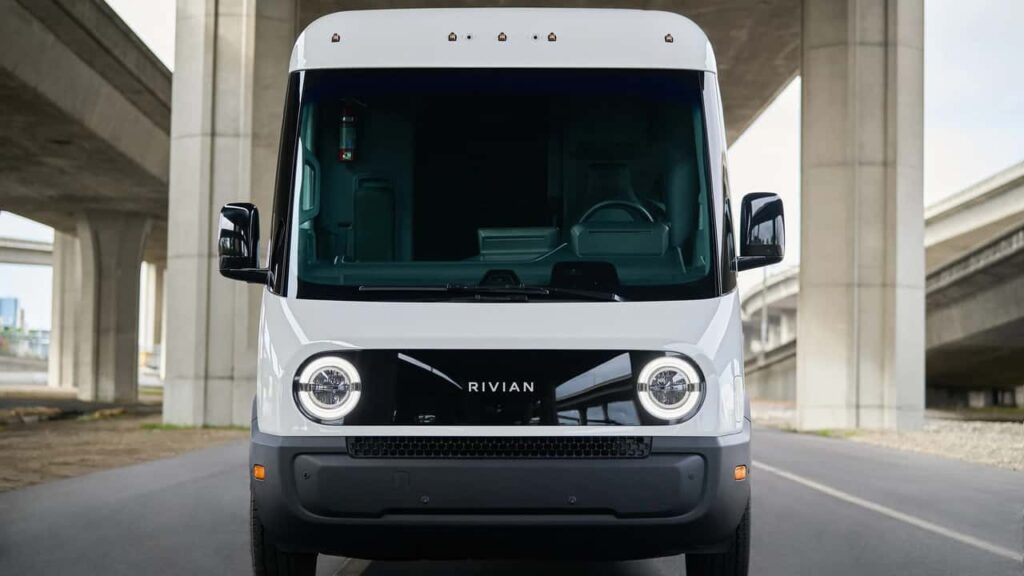Rivian, the electric truck maker, announced its third-quarter results, revealing better-than-expected performance and positive developments in its production outlook. The company also narrowed its full-year loss projection and shared updates on its key partnerships. Rivian’s stock (RIVN) initially reversed lower in midday trading but later recovered as investors digested the positive news.
Featured Image credit: cdn.motor1
Production and Financial Highlights
Rivian showcased confidence in its production capabilities by increasing its full-year forecast from 52,000 to 54,000 units. The company attributed this boost to progress on production lines, ramping its in-house motor line, and a positive supply chain outlook. Notably, Rivian’s initial forecast of 50,000 units was revised earlier in the year, highlighting the company’s adaptability to market conditions.
In addition to the increased production outlook, Rivian narrowed its full-year adjusted EBITDA loss to $4.0 billion from $4.2 billion. The company also revealed a 2023 capital expenditure (capex) guidance reduction of $1.1 billion. These financial adjustments signal a strategic focus on operational efficiency and effective capital allocation.
Rivian’s decision to no longer exclusively sell its electric delivery van (EDV) to Amazon is a noteworthy development. The exclusivity waiver opens doors for additional sales beyond the initial agreement of 100,000 units. Analysts, including Chris McNally from Evercore ISI, see this move as key upside potential, unlocking the capacity for more deliveries and capitalizing on the higher margins of EDVs compared to consumer-focused R1 vehicles.
Financial Performance and Market Dynamics
In the third quarter, Rivian reported revenue of $1.34 billion, surpassing the estimated $1.31 billion, and an adjusted loss per share of $1.19 compared to the expected $1.32. The revenue figure represents a substantial 19.6% increase from the previous quarter and a remarkable 150% growth compared to the same period last year. On an adjusted EBITDA basis, Rivian reported a loss of $942 million, narrower than the $1.3 billion loss reported a year ago.
Rivian’s CEO, RJ Scaringe, outlined the company’s strategic focus during the Q3 conference call. The emphasis is driving production volume, achieving better fixed-cost leverage, reducing material costs, and expanding commercial and go-to-market operations. This multifaceted approach aims not only to sustain demand but also to drive up the average selling price (ASP).
Unique Positioning in a Challenging Market
The broader EV market faces headwinds, with traditional automakers like GM and Ford reporting challenges in meeting evolving EV demand. Ford’s pause on $12 billion worth of EV investments and GM’s decision to push back its EV truck expansion underscore the industry’s uncertainties. Even Tesla, a pioneer in the EV space, is not immune, delaying construction of its Gigafactory in Mexico due to concerns about global economic conditions.
However, Rivian’s focus on lifestyle-oriented trucks and targeting coastal and higher-income buyers might position it uniquely in the EV landscape. The company reported a 23% sequential increase in Q3 deliveries compared to Q2, even after raising prices. Unlike some competitors, Rivian’s customer base may be more resilient to rising prices and interest rates.
Analyst Perspectives and Future Outlook
While Rivian’s recent execution has been strong, analysts, including Piper Sandler’s Alexander Potter, highlight the challenges ahead. The company’s valuation reflects a balance between recent strong execution and a challenging 2+ year execution plan. There is a non-zero risk of delays and cost overruns, acknowledging the complexity of the path to profitability.
Rivian is slated to release its third-quarter 2023 results on November 7. The Zacks Consensus Estimate anticipates a loss per share of $1.36 on revenues of $1.36 billion. Despite the consensus narrowing the loss estimate by 5 cents in the past 30 days, Rivian’s Earnings ESP (Earnings Expected Surprise Prediction) stands at -1.78%, adding an element of uncertainty.
Comparative Analysis and Industry Trends
Rivian is not alone in facing challenges. Other players in the EV market, such as Lucid Group (LCID) and Fisker Inc. (FSR), are also scheduled to release third-quarter earnings. Lucid Group has an estimated loss of 27 cents per share, while Fisker Inc. is expected to report a loss of 19 cents per share. Both companies face challenges with negative Earnings ESPs and varying historical earnings performances.
The broader EV industry is witnessing shifts in demand and strategic decisions by major automakers. Ford and GM are recalibrating their EV strategies due to evolving demand. These dynamics reflect the evolving nature of the market and the need for adaptability.
Final Thoughts
Rivian’s journey in the EV market is a testament to the complexities and opportunities inherent in this rapidly changing industry. While the third-quarter results show promise, challenges persist on the road to profitability. The unique positioning of Rivian’s lifestyle-oriented trucks and its focus on specific buyer demographics may prove advantageous.
Investors eagerly await the upcoming earnings release for insights into Rivian’s ability to sustain growth, manage costs, and navigate the competitive landscape. As the EV market continues to evolve, Rivian’s strategic decisions and execution will play a crucial role in determining its success amid industry uncertainties. The road ahead is filled with both challenges and opportunities, and Rivian’s ability to steer through will be closely watched by investors and industry observers alike.


